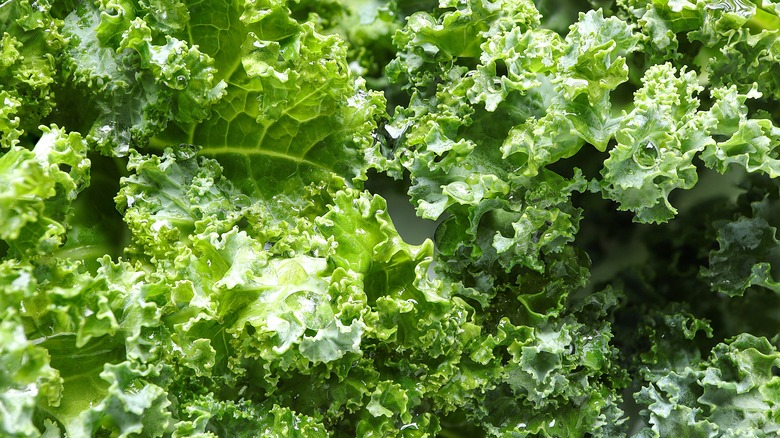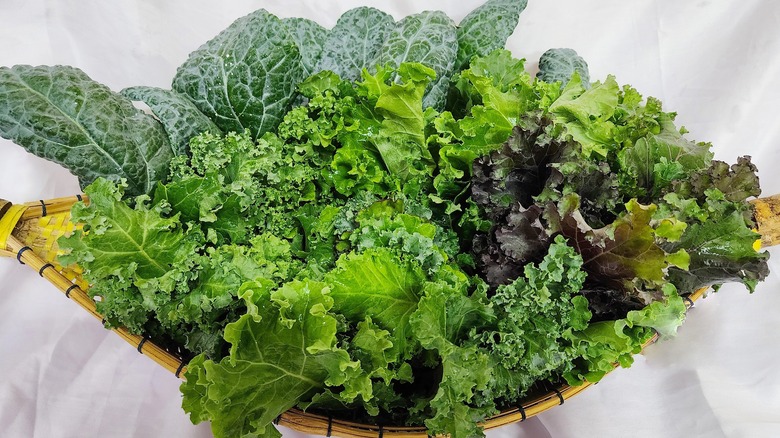What To Look For When Choosing The Freshest Kale
Kale is a commonly used but often misunderstood ingredient. It comes in several varieties and plays an important role in salads and smoothies, but many turn away from it, claiming that the taste and texture are not appealing. The truth likely is that many people are eating kale that is not fresh.
Much like any other type of produce, kale does its best work when it is at its freshest. The key to getting the best tasting kale is being able to spot fresh kale, whether at the grocery store or a local farmers market. Fresh kale should be a dark, deep green color and should feel sturdy and tight when held.
Feeling kale is key to determining freshness, as the way it feels in your hand is a good indicator of how it will feel when eaten. Kale that is limp and loose will have a less than desirable texture and taste. Understanding how to look for the leafy green vegetable and how to store kale so it stays fresh longer will help maximize its usefulness.
Buying kale: do's and don'ts
When shopping for kale, timing can play a major role when it comes to freshness. Kale is actually ripest during wintertime, becoming sweeter and flavorful after frost in particular. Like any other type of produce, catching kale at the peak of its season can prove to be not only fresher but far tastier too.
Color can indicate freshness in several ways. Generally speaking, fresh kale that is ready to be eaten will be a deeper green color than older, underripe kale. Be sure to look out for discoloration on the leaves as well, as they can be an indicator that kale is not fresh. Yellow and brown spots are a good sign of age with kale in particular.
Last but not least, kale will visually look and feel better or worse depending on age. Good, fresh kale will be sturdy but not tough to the point of being rock solid. Its leaves should be smooth with a nice curled shape. On the other hand, old kale will likely feel limp and have flimsy, mishapen leaves.

